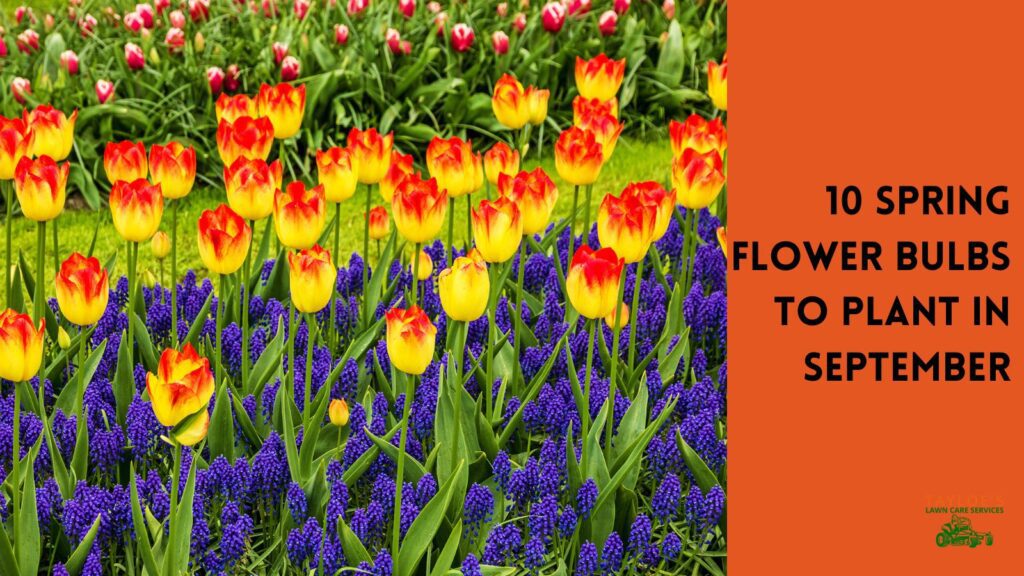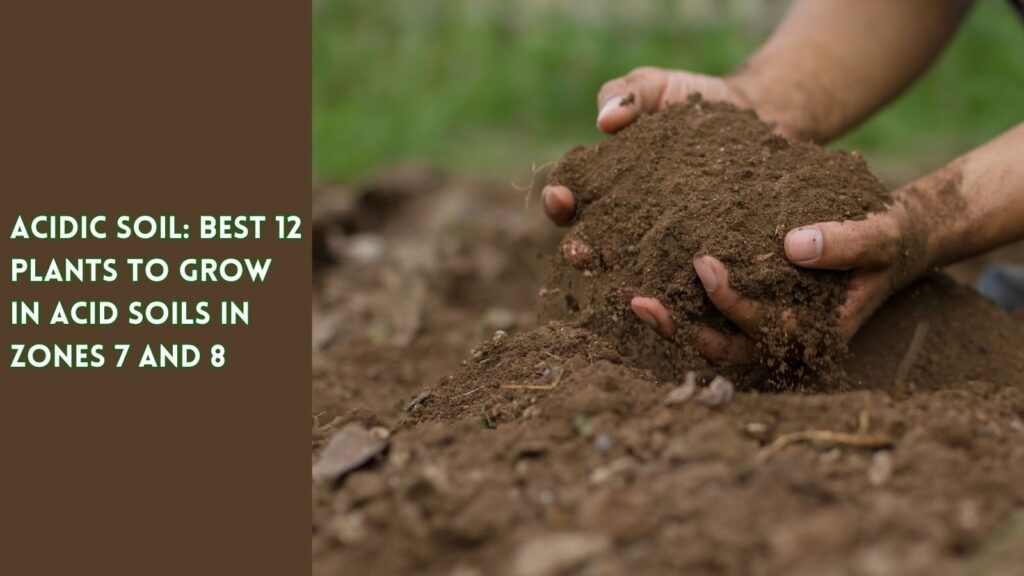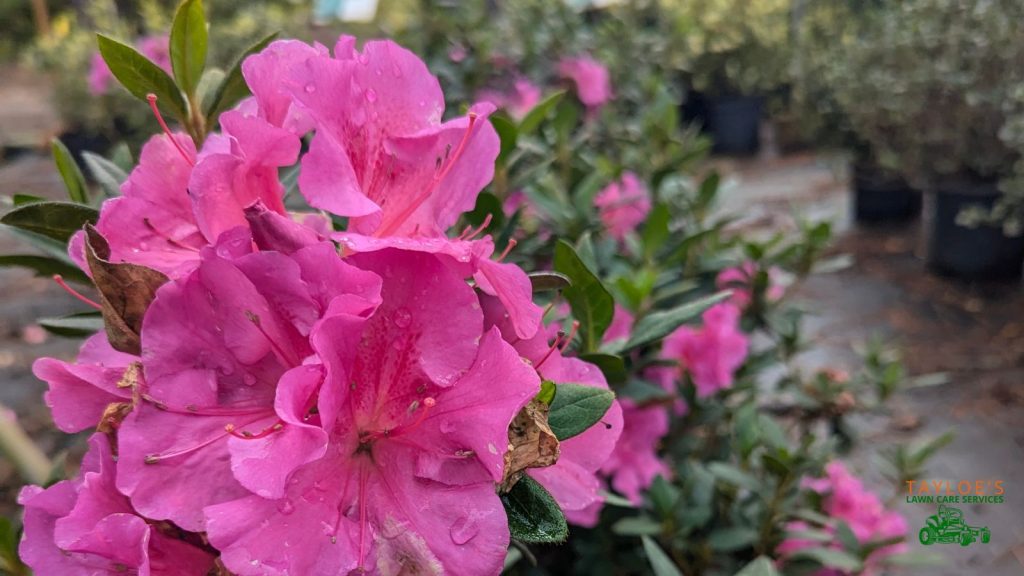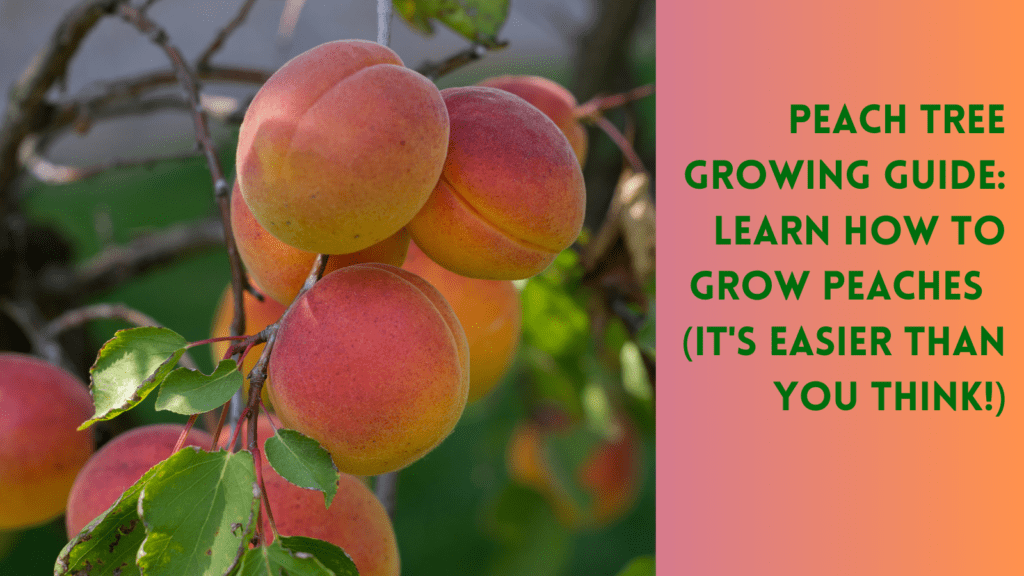Last Updated on: 18th January 2025, 02:47 pm
Azaleas brighten up the spring landscape with so many colors.
Azalea bushes (rhododendron) are one of the most popular ornamental shrubs. These hardy flowering shrubs are native to Asia and North America. You can find them in a wide range of sizes and colors. The variety makes them a versatile choice for any garden.
We will explore how to plant, grow, and care for azalea bushes, tips on pruning, USDA growing zones, the Latin name, common diseases and pests, and the symbolism of azaleas.
Azalea Bushes Produce Showy, Bright Blooms and Soft Springtime Fragrances.
Azalea (Latin: Rhododendron) flowers are known for their large, showy blooms that come in various colors, including pink, red, purple, white, yellow, orange, peach, lavender, and blue (rare).
The flowers are typically one or two inches in diameter and have five broad and flat petals. Some azalea species produce single flowers, while others produce dense clusters of flowers.

Rhododendron Flower Symbolism.
These stunning flowers have meaning in Eastern and Western cultures, making them popular for gift-giving, especially for a housewarming.
- In Asian culture, azaleas are symbols of womanhood and femininity and a symbol of love.
- In Western culture, azaleas often represent temperance and abundance.
All Azalea Bushes Are Rhododendrons, But Not All Rhododendrons Are Azaleas
That might sound confusing, but it’s a fact worth mentioning. Here’s a breakdown to explain why:
- Azaleas can be either deciduous (they lose their leaves in the fall) or evergreen. Moreover, they typically have smaller leaves and funnel-shaped flowers. They also usually have only five stamens (the male part of the flower).
- Rhododendrons are typically evergreen (though there are some deciduous varieties) and have larger leaves and bell-shaped flowers. They tend to have ten or more stamens.
So, while all azaleas can be classified as rhododendrons based on their genus, not all rhododendrons are azaleas. The distinction is more about their specific characteristics and cultural practices than their botanical classification.
Don’t worry too much about splitting hairs – most folks will know you’re talking about a lovely flowering shrub.
Azaleas Draw Many Pollination Helpers to Your Garden
Bees, butterflies, and hummingbirds primarily pollinate azalea flowers. These pollinators enjoy the nectar and bright colors of the flowers, which serve as visual cues for the presence of food.
The nectar in azalea flowers provides energy for these pollinators, while the bright colors make it easier for them to locate the flowers. The flowers’ structure also makes it easy for pollinators to access the nectar, with their large, flat petals providing ample landing space and the center of the flower offering a convenient place to feed.
In addition to providing a food source, azalea flowers also play an essential role in the species’ survival by allowing pollen transfer between flowers, which is necessary for fertilization and seed production. Overall, the mutually beneficial relationship between azalea flowers and pollinators helps ensure survival and health.

How to Grow Azaleas
Azaleas are hardy in USDA growing zones 6-9, although some varieties can thrive in zone 5 with proper winter protection. Here are the steps to plant rhododendron shrubs:
- Choose the right location: Azaleas prefer partially shaded to shady areas, so find a spot with some protection from direct sunlight, especially during the hottest hours of the day.
- Prepare the soil: Azaleas prefer acidic soil, so amend the soil generously with compost, peat moss, or sulfur to lower the pH from 5 to 5.5. Create a hole about 2 or 3 times wider than the root ball and equally as deep.
- Plant the shrub: Remove the azalea from its container and loosen the roots if necessary. Place the shrub in the hole, ensuring the top of its root ball is level with the surrounding soil. Backfill the soil around the root ball, pressing it firmly to remove air pockets.
- Water the shrub: Water the azalea thoroughly, giving it a good soaking to settle the soil around the roots. Repeat watering several times a week until the shrub is established, typically within 6-8 weeks.
- Mulch the shrub: Spread a 2-3 inch layer of mulch surrounding the base of the shrub, leaving a few inches of clearance between the mulch and the trunk. This layer will help retain moisture and prevent weeds from competing with the new shrub.
- Fertilize the shrub: Azaleas prefer acidic soil, so fertilize the shrub with an acidic fertilizer. Follow the package directions for application.
- Monitor and maintain the shrub: Check the shrub regularly for signs of stress or disease. Be sure to address any issues promptly. Prune the shrub as needed to maintain its shape and encourage healthy growth.
Following these steps will give your azalea shrub the best chance for healthy growth and long life in your garden.
Caring for Azalea Bushes
Here are a few tips to take good care of your azaleas:
Care Tips:
- Azaleas need well-drained soil and a location with partial to full shade.
- Water regularly, particularly during dry periods, to keep the soil just moist.
- Fertilize in spring with an azalea fertilizer or a balanced, slow-release fertilizer.
- Mulch around the bottom of the plant, helping to retain moisture and suppress weeds.
Pruning:
- Prune azaleas immediately after blooming to remove any dead or damaged growth.
- Thin out any overcrowded or crossing branches to promote good air circulation.
- Cut back leggy stems to encourage thicker growth.
Diseases and Pests:
- Azaleas are susceptible to powdery mildew, root rot, and petal blight.
- Common pests include scale insects, aphids, and azalea lace bugs.

The Takeaway: Azalea Bushes Are Beautiful in Moderate Climates
Azaleas are a gorgeous addition to any garden. With proper care, these shrubs can thrive and provide an array of colors and fragrances each spring. Remember their needs for well-drained soil, partial to full shade, regular watering, and fertilizing, and prune them correctly after blooming for optimal growth. Following these planting and care tips, you’ll be on your way to growing beautiful azalea bushes in your garden.
If you need a hand with your yard work – from grass cutting to pressure washing – let’s connect! You can find us on Facebook or call or text 252.287.3375.
Author Profile

- Deborah Tayloe is the CEO and co-founder of Tayloe's Lawn Care Services, LLC. She has a B.S.Ed and holds certificates in soil and water management and herbology from accredited programs.
Latest entries
 GardeningSeptember 27, 2025What perennials, shrubs, and trees don’t like fall pruning (and why)?
GardeningSeptember 27, 2025What perennials, shrubs, and trees don’t like fall pruning (and why)? Trees and ShrubsSeptember 14, 2025Fall Shrub Pruning Guide (September–October)
Trees and ShrubsSeptember 14, 2025Fall Shrub Pruning Guide (September–October) Trees and ShrubsApril 22, 2025Boxwood Blight: Early identification and isolation
Trees and ShrubsApril 22, 2025Boxwood Blight: Early identification and isolation Flower GardenApril 8, 2025John F. Kennedy Rose: Hybrid tea rose with elegant white blooms
Flower GardenApril 8, 2025John F. Kennedy Rose: Hybrid tea rose with elegant white blooms






